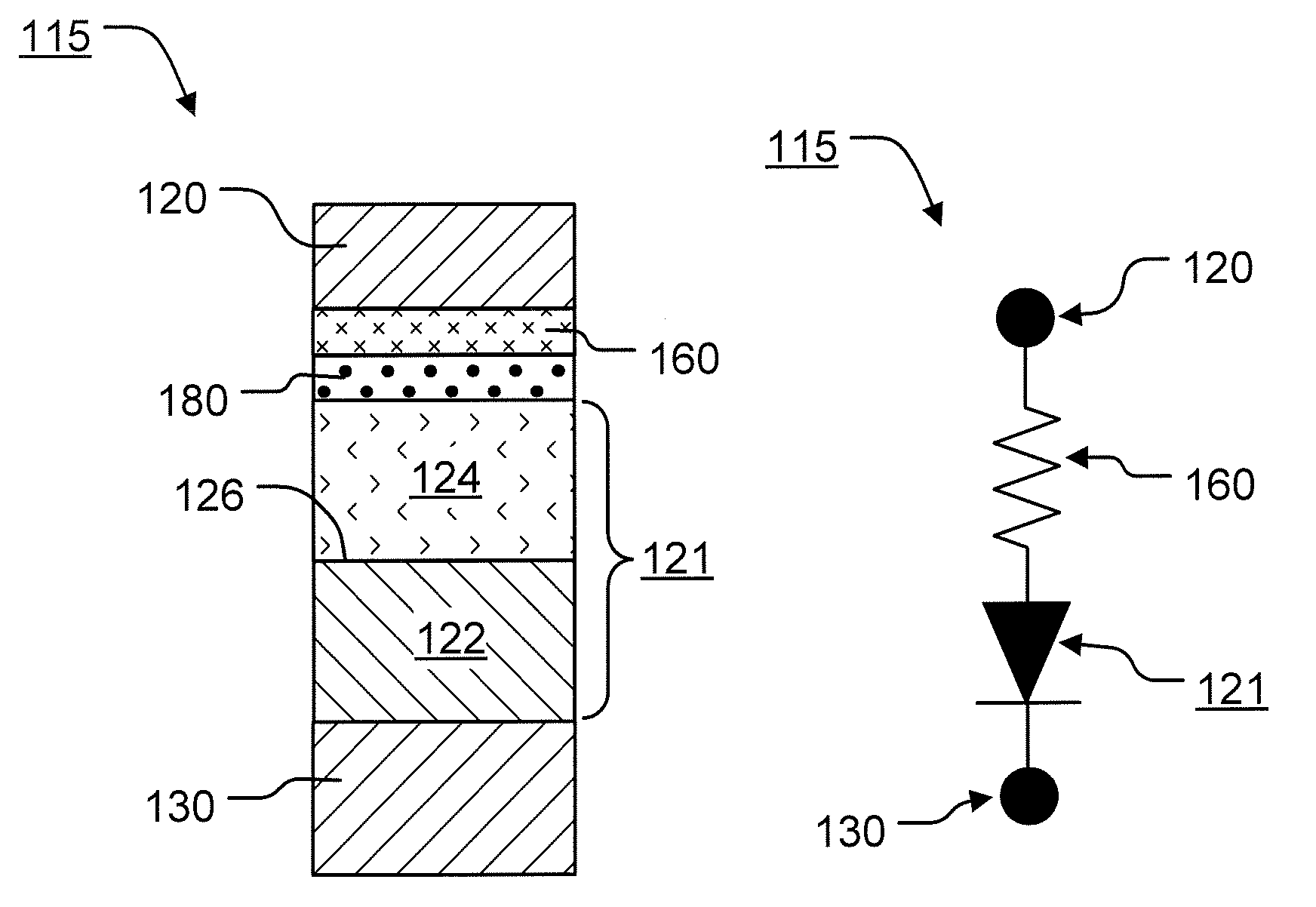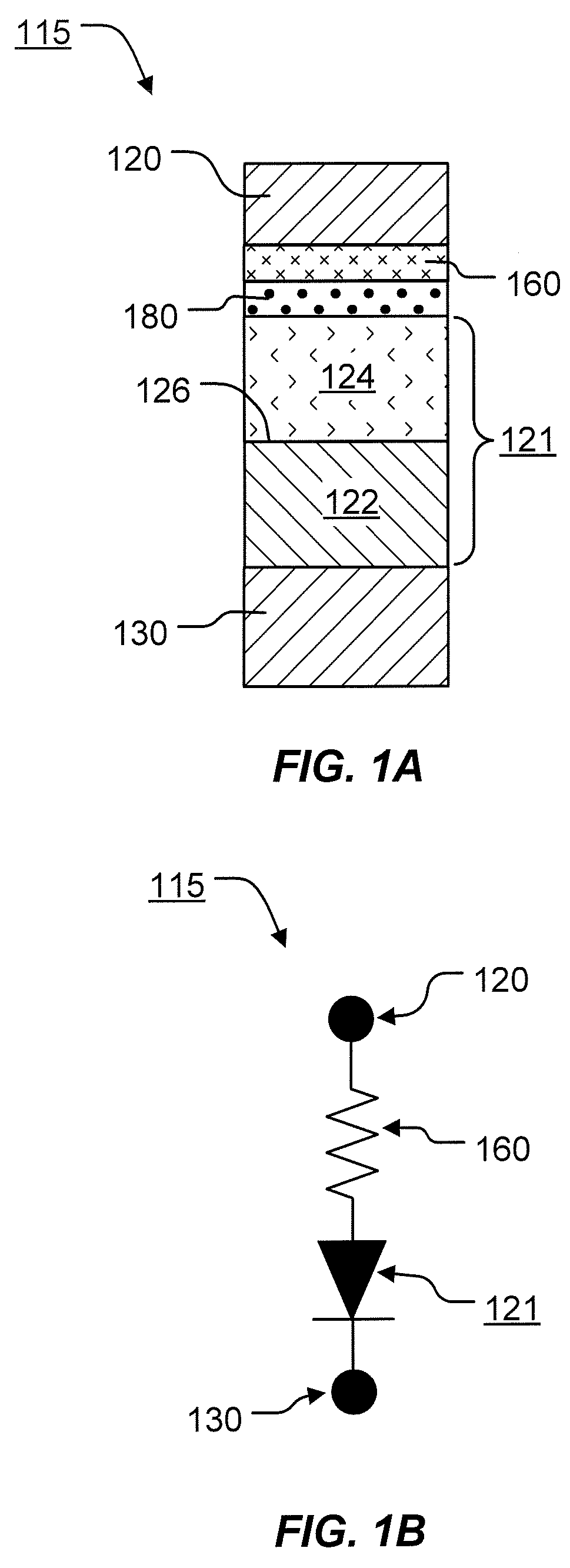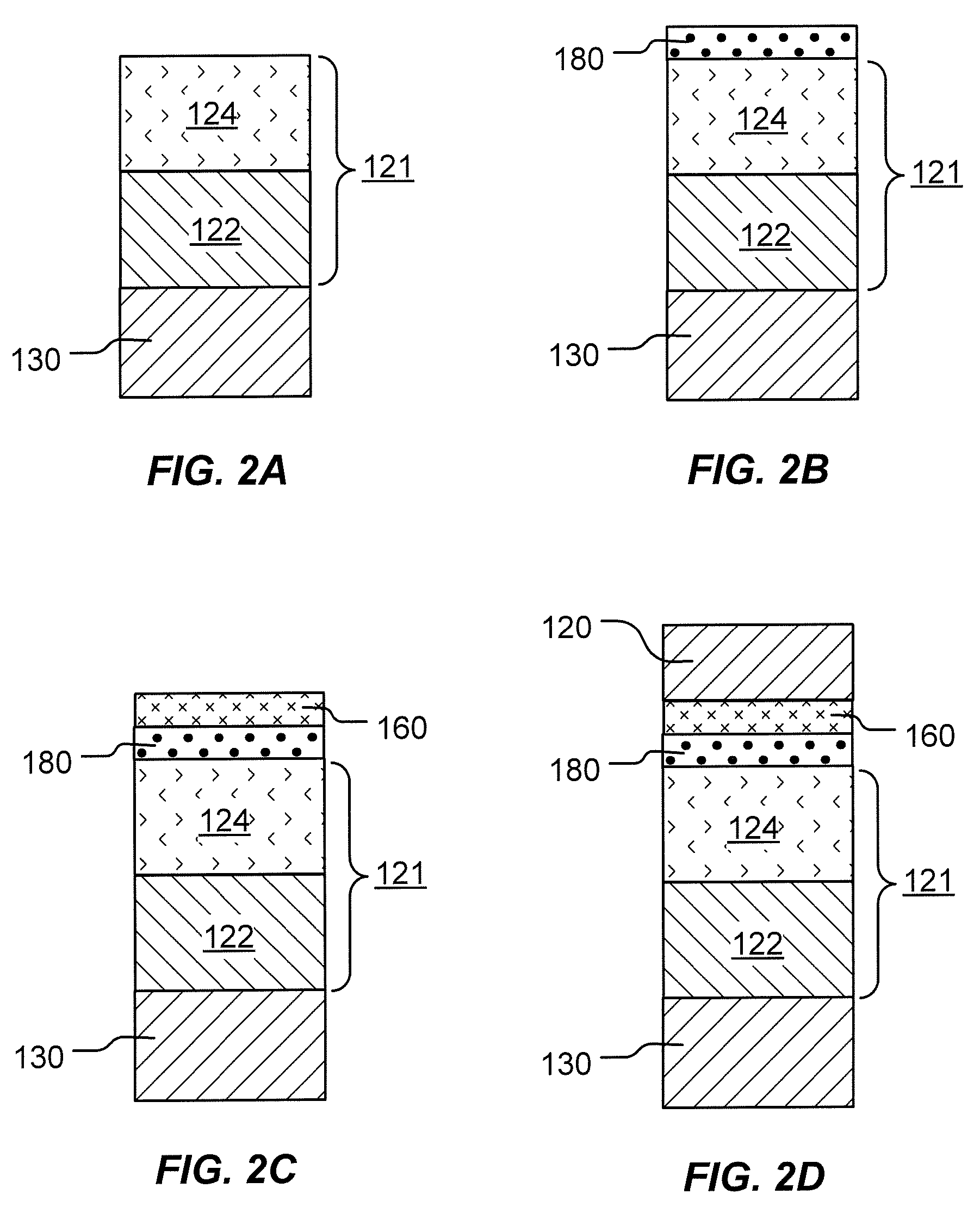Aluminum copper oxide based memory devices and methods for manufacture
a memory device and copper oxide technology, applied in the direction of bulk negative resistance effect devices, transistors, instruments, etc., can solve the problems of increasing the complexity of the circuitry of memory devices employing these types of materials, increasing the power consumption of memory devices, and relatively slow programming speeds, etc., to reduce power consumption during programming of memory elements described herein, the effect of low programming voltag
- Summary
- Abstract
- Description
- Claims
- Application Information
AI Technical Summary
Benefits of technology
Problems solved by technology
Method used
Image
Examples
first embodiment
[0025]FIG. 1A illustrates a cross-sectional view of a memory cell 115 including an anti-fuse metal-oxide memory element 160 comprising aluminum and copper. The memory cell 115 includes a diode 121 arranged in electrical series with the memory element 160 along a current path between a first electrode 130 and a second electrode 120. FIG. 1B illustrates a schematic diagram of the memory cell 115 of FIG. 1A.
[0026]The first and second electrodes 130, 120 are conductive elements respectively. The first and second electrodes 130, 120 may each comprise, for example, one or more elements selected from the group consisting of Ti, W, Mo, Al, Ta, Cu, Pt, It, La, Ni, N, O, and Ru and combinations thereof, and in some embodiments may comprise more than one layer. In some embodiments the first electrode 130 may comprise a portion of a word line, and the second electrode 120 may comprise a portion of a bit line.
[0027]The memory cell 115 includes a conductive element 180 between the memory element ...
second embodiment
[0044]In the illustrated embodiment of FIG. 1A the memory element 160 overlies the diode 121. FIG. 5A illustrates a cross-sectional view of a second embodiment for the memory cell 115 with the diode 121 overlying the memory element 160. FIG. 5B illustrates a schematic diagram of the memory cell 115 of FIG. 5A. The same reference numbers for the various elements are used in FIGS. 5A-5B as in FIGS. 1A-1B.
[0045]FIGS. 6A-6D illustrate steps in a manufacturing process for manufacturing the memory cell 115 of FIG. 5A. The materials and processes discussed above with respect to FIGS. 1A-1B and 2A-2D can be used in the various steps of FIGS. 6A-6D, and thus a detailed description is not repeated here.
[0046]FIG. 6A illustrates a first step of forming the conductive element 180 on the bottom electrode 130. Next, the memory element 160 is formed on the conductive element 180, resulting in the structure illustrated in the cross-sectional view of FIG. 6B. The diode 121 is then formed on the memo...
PUM
 Login to View More
Login to View More Abstract
Description
Claims
Application Information
 Login to View More
Login to View More - R&D
- Intellectual Property
- Life Sciences
- Materials
- Tech Scout
- Unparalleled Data Quality
- Higher Quality Content
- 60% Fewer Hallucinations
Browse by: Latest US Patents, China's latest patents, Technical Efficacy Thesaurus, Application Domain, Technology Topic, Popular Technical Reports.
© 2025 PatSnap. All rights reserved.Legal|Privacy policy|Modern Slavery Act Transparency Statement|Sitemap|About US| Contact US: help@patsnap.com



